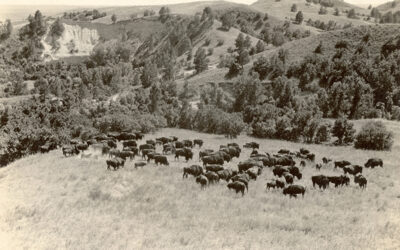Frank H. Spearman (1859-1937) was a prolific writer of heroic fiction, especially about railroads and about the men who built and ran them in the West in the late 1800s. During the last half of his life, he found a substantial audience for his magazine stories and books, and early Hollywood created photoplays of several stories. His most famous work, Whispering Smith, became a best seller in 1906 and was filmed three times, the last in 1948. Tom White’s article on Spearman and his career are featured in the Fall 2006 issue of Nebraska History magazine.
Although Spearman lived and worked in this state for eight years and there discovered the people who became the characters for his early tales, he has remained virtually unknown as a Nebraska author. A native of Buffalo, New York, he and his wife, the former Eugenie Lonergan of Chicago, moved to McCook in October of 1886. Spearman there opened the Farmers and Merchants Bank, financed by investments from Harry Spearman, Frank’s older brother, and Mary Lonergan, Eugenie’s mother.
The Farmers and Merchants Bank, however, did not survive the drought and depression years of the early 1890s, and in May 1894 the Spearmans left McCook for Omaha. In 1895 they moved again, this time to Wheaton, Illinois. Spearman continued to pursue a business career in Omaha and Wheaton, writing short fiction in the evenings. In 1898, the first year he wrote exclusively, he noted total receipts of $598.25, hardly enough to support a family eventually to include five children.
However, the publication of The Nerve of Foley and Other Railroad Stories in 1900 and Held for Orders the next year, each with ten stories, established Spearman as a premier writer of railroad fiction. Whispering Smith, his most successful novel, was published in March 1906. Its plot (railroaders fighting nature and a great man gone bad) is simple, but the book won readers with a classic western balance of romance, realism, character, and a wealth of action.
Spearman and his family moved to Hollywood, California, in 1915. Although he wrote other fiction, he is remembered today almost exclusively for his railroad stories, which express the order, progress, and enterprise alive on the prairie during the 1880s and 1890s. He witnessed Nebraska’s rapid evolution from unsettled to modern life, and his early stories, especially the twenty pieces compiled in The Nerve of Foley and Held for Orders, offer a window into that fascinating period.



